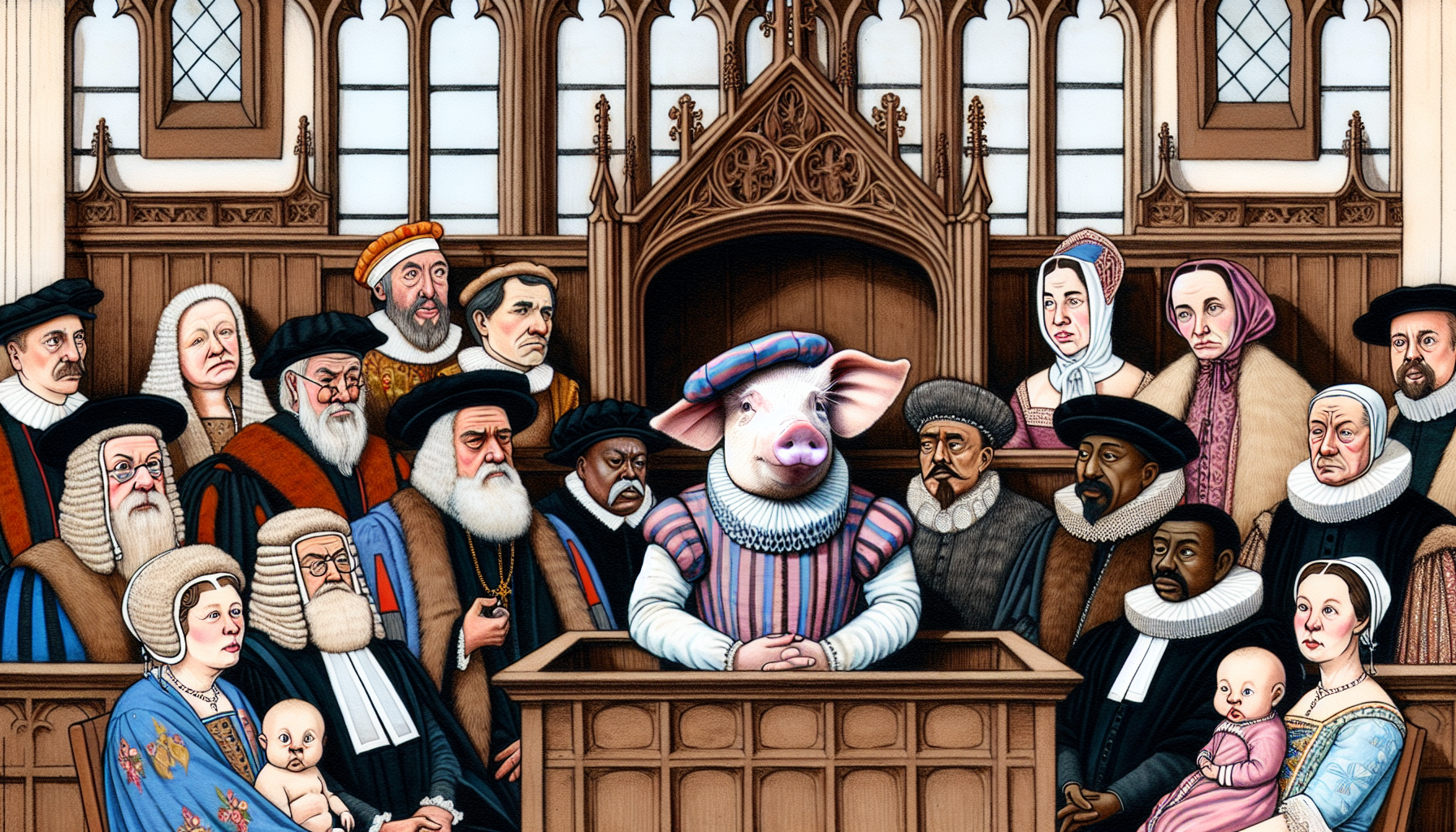
Imagine a courtroom in medieval France, but the defendant isn’t a person—it’s a pig! In 1457, a sow and her piglets were put on trial in Lavegny, France, for the murder of a five-year-old boy. The bizarre case is one of history’s strangest legal moments. The pig had allegedly attacked the child, leading to his death, and the local court decided to treat the animal like a human criminal. The sow was arrested, put in a cell, and even given a public defender to argue her case.
The trial was a serious affair, complete with witnesses and a judge. Villagers testified that the sow had acted with intent, while her piglets were accused of being accomplices. After a lengthy deliberation, the court found the sow guilty and sentenced her to death by hanging. The piglets, however, were acquitted due to their young age and lack of evidence that they directly participated in the crime. The execution took place in the town square, where the sow was dressed in human clothes—a vest and pants—to symbolize her status as a “person” under the law. The spectacle was meant to serve as a warning to other animals, believe it or not!
This wasn’t a one-off event. From the 13th to 18th centuries, animals were often tried in European courts for crimes like theft, property damage, or even witchcraft. Pigs were frequent offenders because they roamed freely and sometimes attacked children. Historians think these trials reflected medieval beliefs about justice and morality, where animals were seen as capable of sin. Some cases even had bizarre twists—like a rooster in Switzerland executed for laying an egg, which was thought to be a sign of witchcraft.
This quirky piece of history shows how much our legal systems have evolved. Next time you see a pig, you might wonder if it’s got a rap sheet! Share this weird fact with your friends and dig into more curious trivia right here.

Leave a Reply